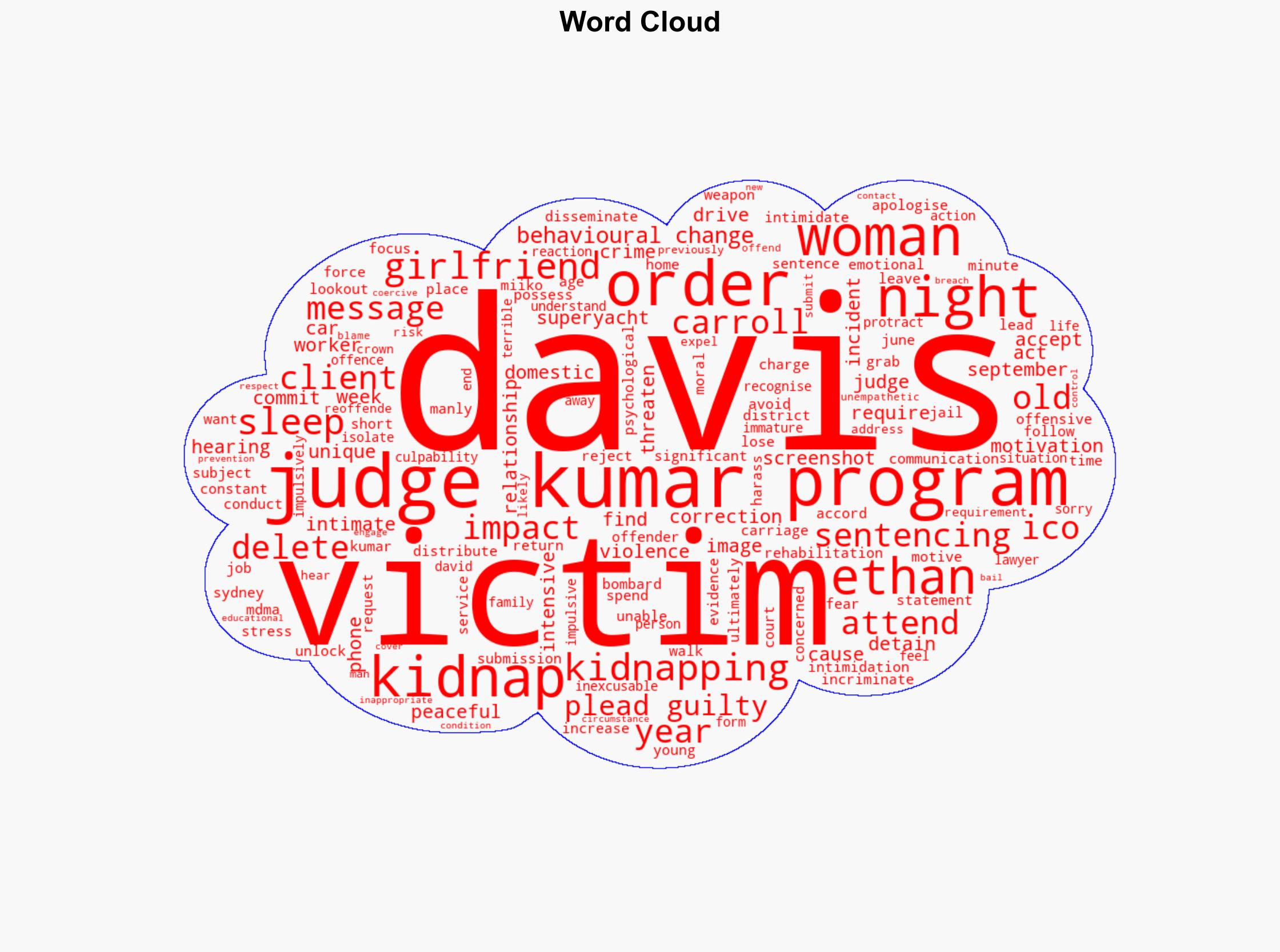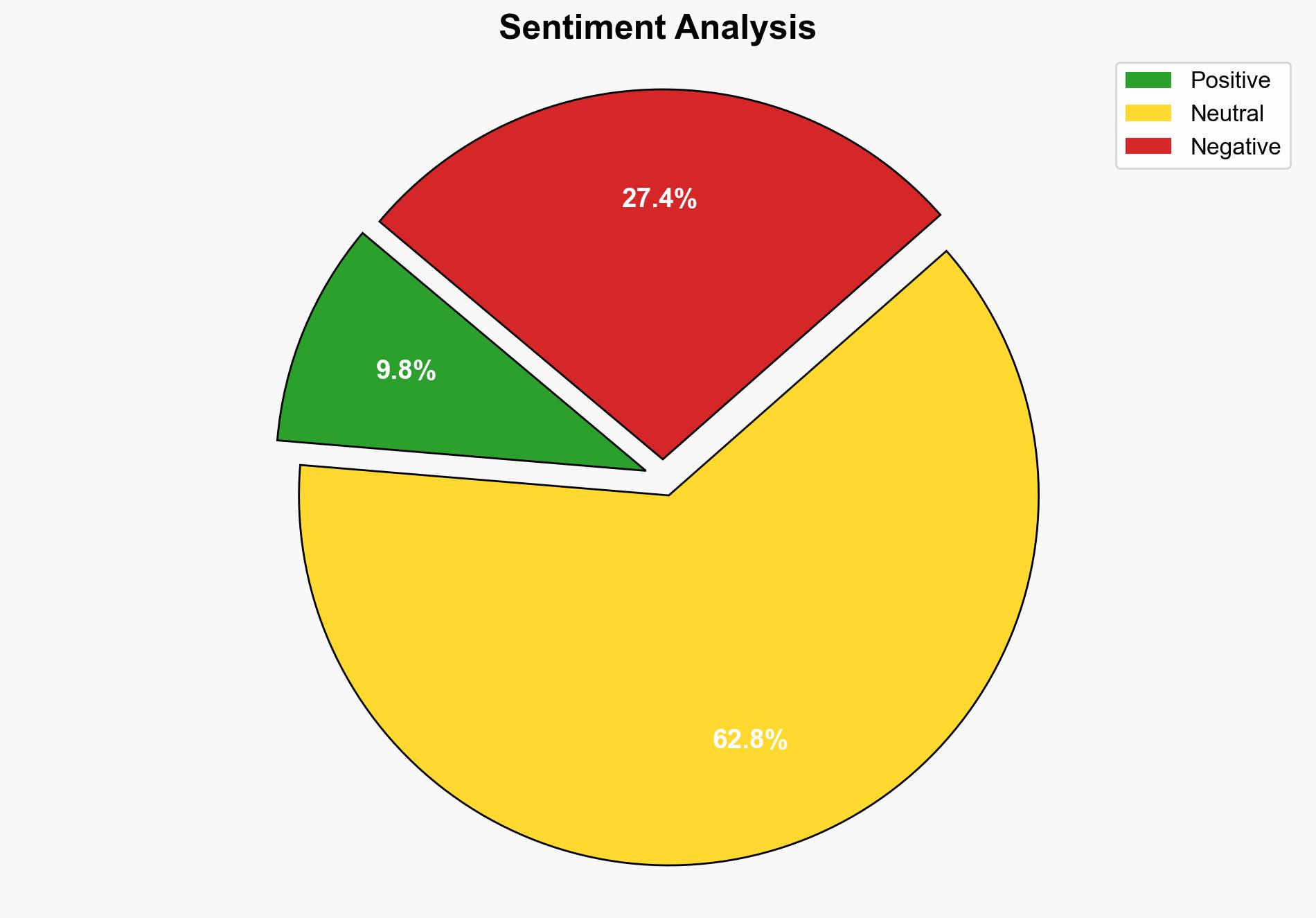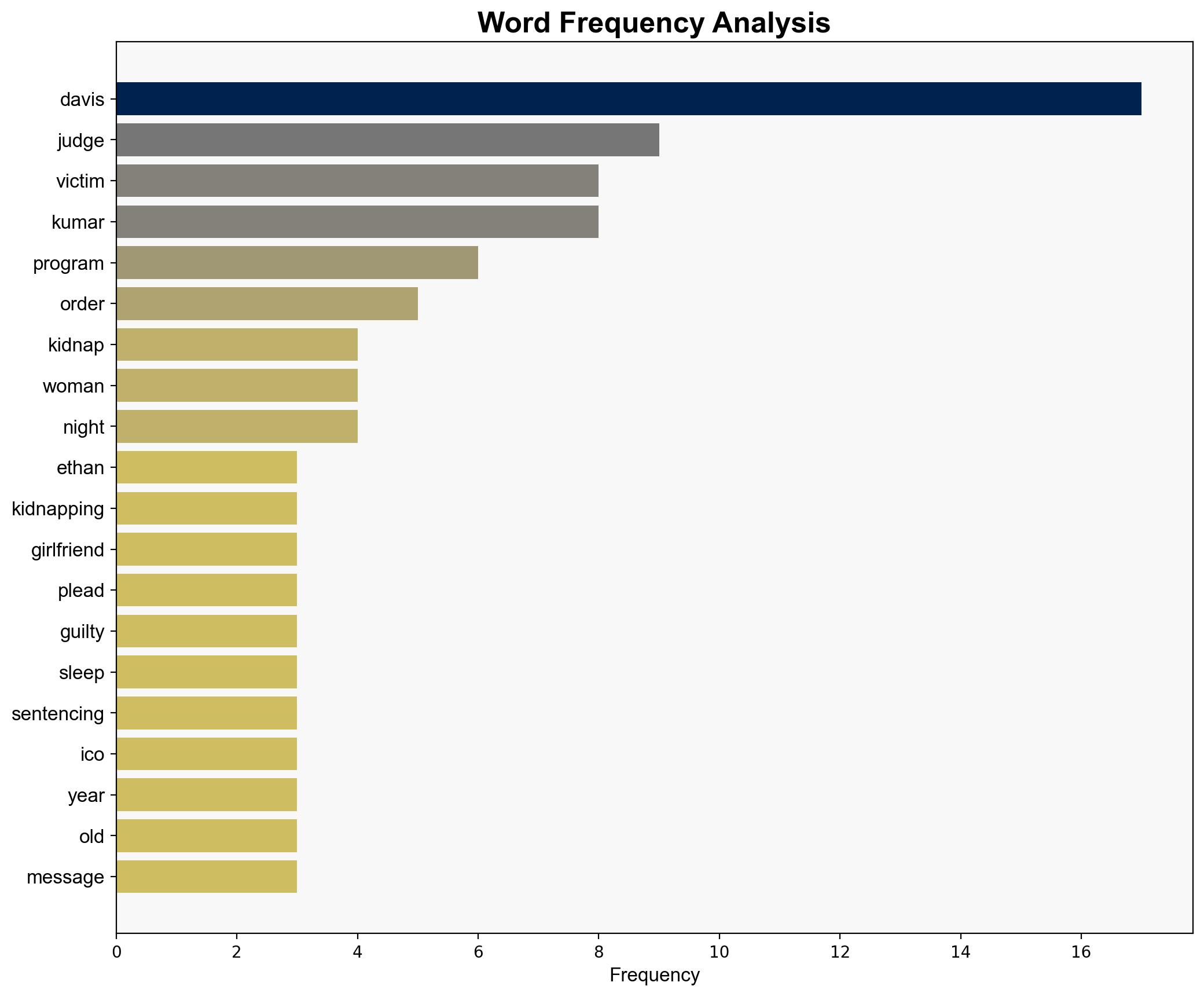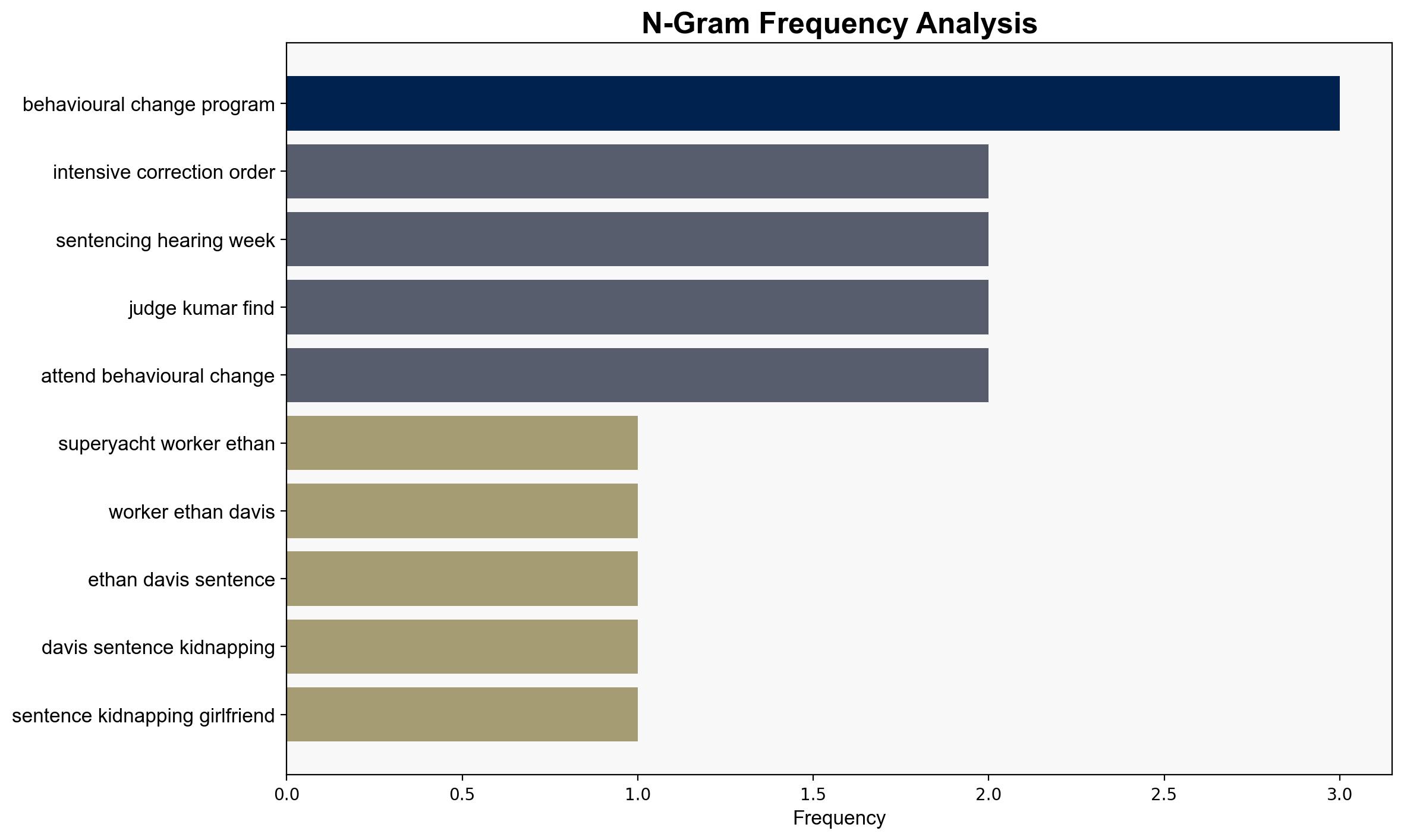Former superyacht worker avoids jail for kidnapping ex-girlfriend – ABC News (AU)
Published on: 2025-09-02
Intelligence Report: Former superyacht worker avoids jail for kidnapping ex-girlfriend – ABC News (AU)
1. BLUF (Bottom Line Up Front)
The most supported hypothesis is that Ethan Davis acted impulsively to protect his job by deleting incriminating evidence, rather than with premeditated malicious intent. Confidence in this assessment is moderate due to the lack of comprehensive psychological evaluation and potential bias in judicial interpretation. Recommended action includes monitoring compliance with the intensive correction order and evaluating the effectiveness of the behavioral change program.
2. Competing Hypotheses
1. **Hypothesis A**: Ethan Davis kidnapped his ex-girlfriend primarily to delete incriminating evidence from her phone, driven by fear of job loss and reputational damage. This was an impulsive act rather than a calculated crime.
2. **Hypothesis B**: Ethan Davis’s actions were part of a broader pattern of coercive control and intimidation, indicating a higher risk of future offenses and a need for stricter legal consequences.
Using ACH 2.0, Hypothesis A is better supported by the judge’s acceptance of Davis’s motivation and the emphasis on rehabilitation over punishment. However, the history of breaching bail conditions and prior expulsion from a behavioral program lends some support to Hypothesis B.
3. Key Assumptions and Red Flags
– **Assumptions**: The court assumes that Davis’s actions were impulsive and that rehabilitation is feasible. It also assumes that the behavioral change program will effectively mitigate reoffending risk.
– **Red Flags**: Previous expulsion from a behavioral program and breach of bail conditions suggest potential non-compliance. The victim’s statement of ongoing fear contradicts the assumption of a one-time impulsive act.
4. Implications and Strategic Risks
The case highlights potential gaps in addressing domestic violence and coercive control through legal and rehabilitative measures. If Davis reoffends, it could undermine public confidence in judicial leniency and rehabilitation programs. There is also a risk of setting a precedent for similar cases, potentially leading to inadequate deterrence.
5. Recommendations and Outlook
- Monitor Davis’s compliance with the intensive correction order and participation in the behavioral change program. Consider additional psychological assessments to better understand underlying issues.
- Scenario-based projections:
- **Best Case**: Davis successfully completes the program, demonstrating behavioral change and no further offenses.
- **Worst Case**: Davis reoffends, leading to increased scrutiny of judicial decisions and potential harm to the victim.
- **Most Likely**: Davis complies with the order but requires ongoing monitoring to ensure long-term behavioral change.
6. Key Individuals and Entities
– Ethan Davis
– Judge Miiko Kumar
– David Carroll (Davis’s lawyer)
7. Thematic Tags
domestic violence, legal system, rehabilitation, coercive control





